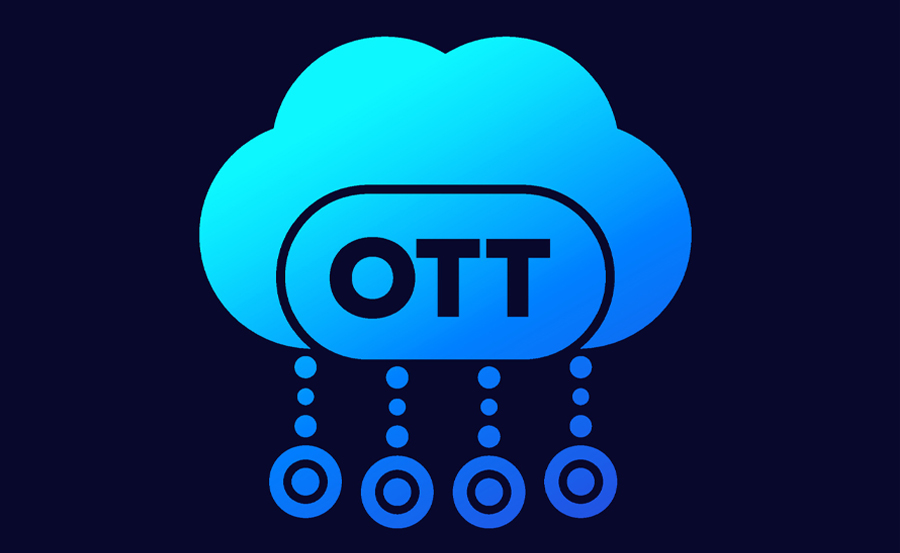OTT, which stands for Over-The-Top content, refers to the delivery of multimedia streaming and broadcasting directly over the internet, without the need for traditional cable, satellite TV, or other traditional media transmitters. In essence, OTT bypasses these older technologies, allowing users to access content simply by connecting their devices to the internet. It has become a game-changer in the way people consume television, movies, and other digital media, offering more flexibility and control over what and when viewers watch.
What Makes OTT Different?
The key difference between OTT and traditional broadcast methods is that OTT content is delivered directly to viewers via the internet, eliminating the need for a cable subscription, satellite dish, or set-top box. This technology allows viewers to stream a variety of content from multiple sources, such as video-on-demand (VOD), live TV, or pay-per-view, from anywhere with an internet connection.
OTT services are typically more cost-effective, allowing viewers to access a broader range of content on-demand without being tied down to lengthy contracts or restrictive service bundles, which is one of the many reasons why they are rapidly gaining popularity worldwide.
If you want buy best IPTV susbscription
Popular OTT Platforms
Some of the most popular OTT platforms include Netflix, Hulu, Amazon Prime Video, and Disney+ for movies and TV series, while platforms like YouTube TV and Sling TV offer live IPTV services. These platforms offer users the freedom to choose what they want to watch, when they want to watch it, with many offering subscription packages for a tailored viewing experience.
Which Devices Support OTT?
OTT content is highly versatile and can be streamed across a wide range of devices. This flexibility is one of the key reasons for its success. Here are some of the devices that support OTT services:
- Smartphones and Tablets: Whether you’re using Android or iOS devices, you can easily stream OTT content using dedicated apps provided by streaming services. This allows for portable viewing, enabling users to watch their favorite shows or movies on the go.
- Smart TVs: Most modern smart TVs come pre-installed with popular OTT apps like Netflix, Amazon Prime, and YouTube. If not, these apps can be easily downloaded from the TV’s app store. With a reliable internet connection, viewers can enjoy high-definition streaming right from their living room.
- Streaming Media Players: Devices such as Roku, Apple TV, Amazon Fire TV, and Google Chromecast are designed specifically to stream OTT content. These media players offer users access to multiple streaming platforms via a simple interface that connects to their TV through an HDMI port.
- Personal Computers (PCs and Laptops): OTT content can also be streamed on desktops or laptops using web browsers or apps dedicated to the streaming service. This makes it easy for viewers to access content even when they are away from their main entertainment setup.
- Video Game Consoles: Popular gaming consoles like PlayStation 4 (PS4) and Xbox One are also equipped with the ability to stream OTT content. With apps like Netflix, Hulu, and Disney+ available for download, users can turn their gaming consoles into entertainment hubs for both gaming and streaming.
- Tablets and Hybrid Devices: Devices like iPads and hybrid laptops (such as Microsoft Surface) are ideal for OTT content streaming, providing users with both mobility and a larger screen for a more immersive experience compared to a smartphone.
How OTT Transforms Entertainment
OTT technology has reshaped the entertainment landscape by allowing viewers to personalize their content consumption. Unlike traditional TV, OTT content can be accessed anytime and is often without ads (depending on the platform and subscription level). This shift from appointment-based TV watching to on-demand viewing has given users unprecedented control over their entertainment.
Additionally, OTT services often feature multi-device synchronization, meaning you can start watching content on one device and continue it seamlessly on another. This feature adds convenience for users who may start a show on their smartphone and then switch to their smart TV when they get home.
Explaining Kodi: A Versatile Open-Source Media Player
Advantages of OTT
- Cost-Effective: One of the major draws of OTT platforms is the ability to pay for only what you want to watch, often at a fraction of the cost of traditional cable or satellite TV packages.
- Flexibility: OTT gives users the freedom to stream content on their terms—watching anywhere, anytime, and on any device. There’s no need for specific hardware like satellite dishes or cable boxes.
- Customization: Unlike traditional TV, OTT allows users to curate their own content library. Whether you’re into movies, sports, documentaries, or live TV, there is something for everyone.
- No Contracts: OTT platforms usually work on a subscription or pay-as-you-go basis, meaning users are not tied down to long-term contracts. This allows for more freedom and flexibility in how viewers manage their content consumption.
Future of OTT
As internet speeds improve and the demand for personalized, on-demand content grows, OTT is set to become the dominant form of media delivery. Many broadcasters are now creating exclusive OTT content, which is further driving the adoption of these services. Live events, sports, and even virtual reality content are becoming increasingly accessible via OTT platforms, bringing new dimensions to digital entertainment.
Conclusion
OTT (Over-The-Top) content has revolutionized how people access and enjoy digital media. By leveraging the power of the internet, it has made it easier than ever for users to watch what they want, when they want, without being tethered to traditional broadcast methods like satellite or cable. The flexibility, affordability, and wide compatibility across various devices make OTT the future of television and streaming media. Whether you’re streaming on a smartphone, smart TV, or gaming console, OTT ensures that your favorite shows, movies, and live events are always just a few clicks away.
Setting Up IPTV on VLC Media Player: A Step-by-Step Process

